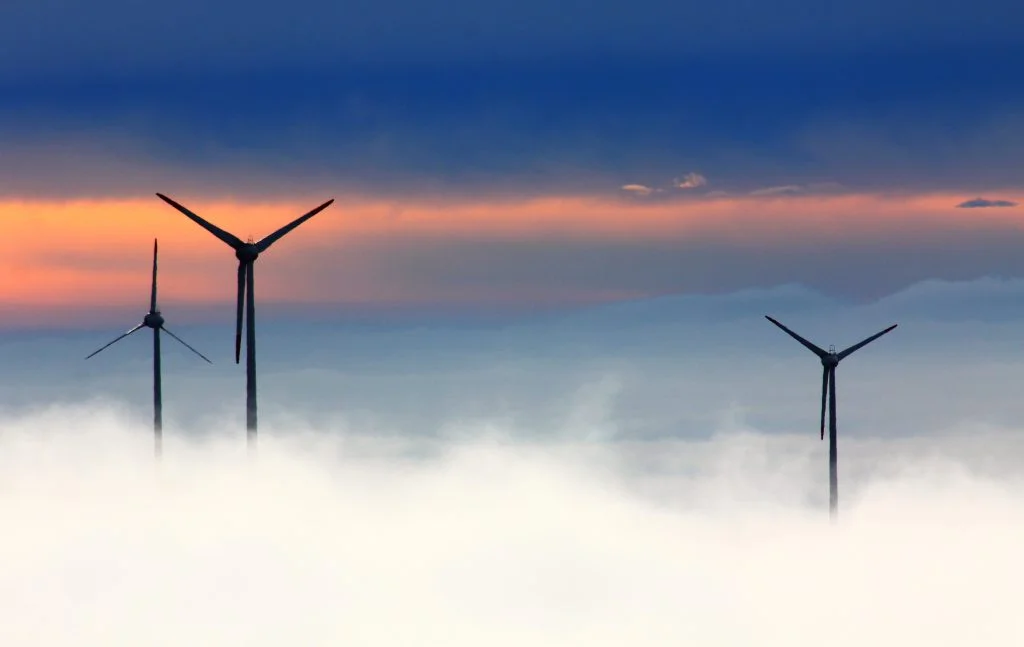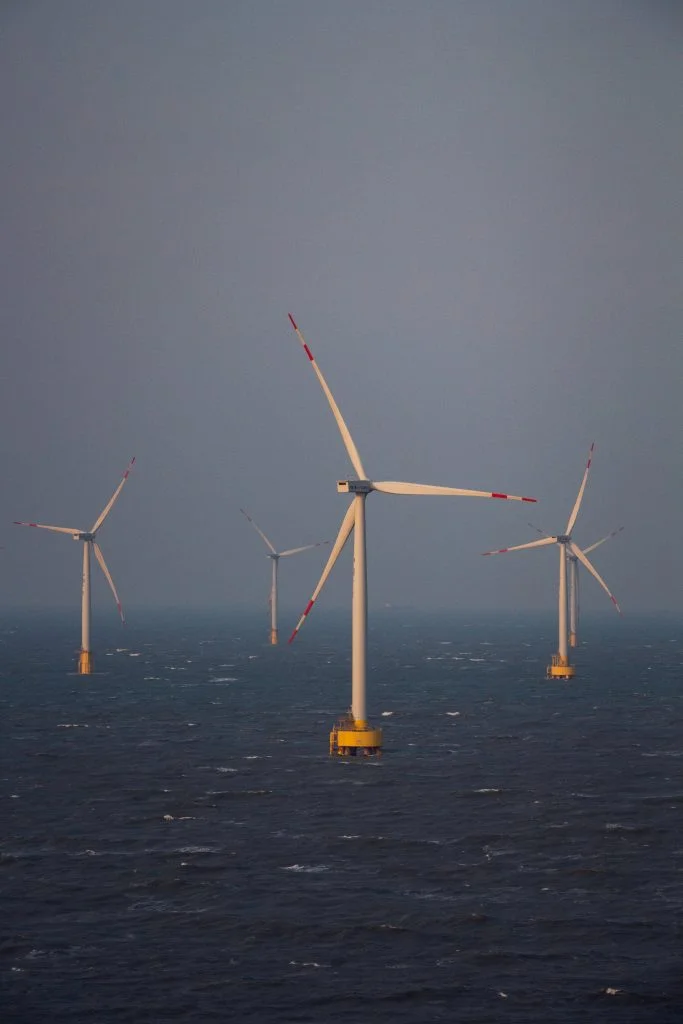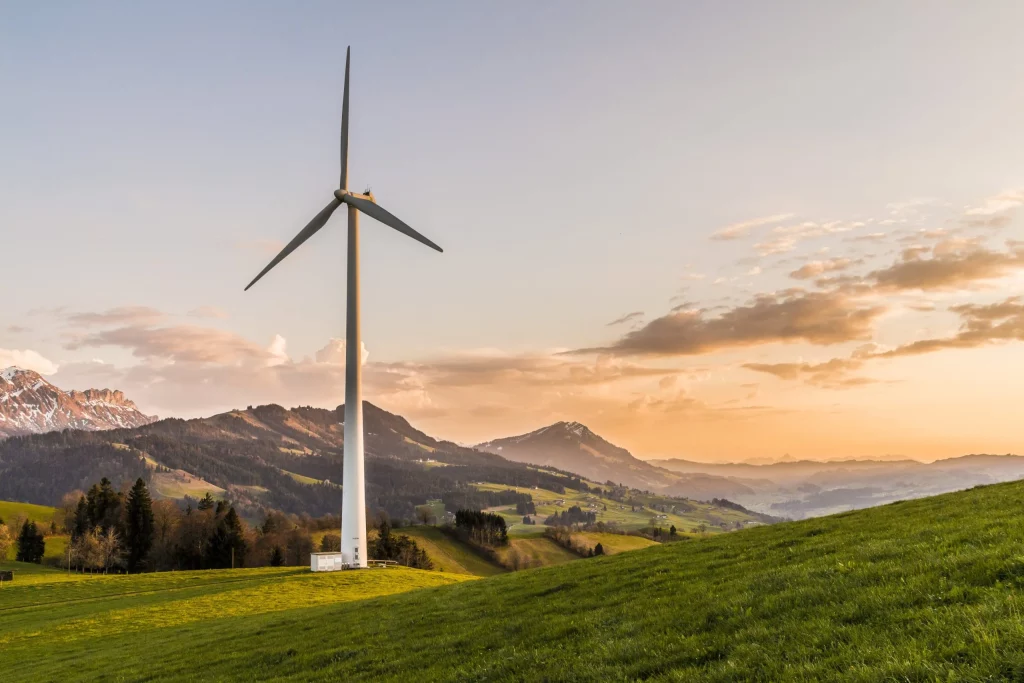Have you ever stood at the base of a wind turbine and just looked up? It’s like gazing at a skyscraper with vertigo. I’ve done it more times than I can count (I stopped counting after 47, that’s a lot of neck craning!). These wind warriors are not just tall; they’re the unsung heroes of the renewable energy world.
Ever wondered how many birds mistake them for an amusement park ride? Or how many cups of coffee worth of energy can one rotation produce? Well, buckle up, because we’re about to embark on a gusty journey into the world of wind turbines, and I promise, it’ll be more exhilarating than your morning espresso!
Nature’s power, human innovation.
Unknown
Wind Turbines Facts
Get ready to be blown away (you see what I did there?) by these epic facts about wind power! Make sure to read every detail, as there’s a quiz at the end to challenge your newfound knowledge.
- The first electricity-generating windmill was used to charge batteries in a small town in Cleveland, Ohio, in 1888, marking the beginning of using wind for electric power.
- A single large turbine can produce enough electricity to supply around 600 U.S. homes.
- Offshore farms can generate twice as much power as those on land due to stronger and more consistent winds.
- The largest wind turbine in the world, as of 2023, stands over 260 meters tall, almost as high as an 85-story building.
- The blades of the most colossal turbines are longer than a football field, emphasizing the scale of modern wind technology.
- Wind energy is one of the fastest-growing energy sources in the world, with a growth rate of 25% per year in the early 21st century.
- Wind farms are now found in over 80 countries, with Antarctica hosting a turbine to reduce reliance on diesel generators.
- The base of each turbine on a wind farm requires about 350 cubic meters of concrete, equivalent to the foundation of a small house.
- Recycling wind turbine blades poses a significant challenge; however, innovative solutions are being developed, including repurposing them for bridge construction.
- Bird and bat mortality due to turbines is a concern, but it’s significantly less compared to deaths caused by cats and windows.
- Wind energy jobs have surpassed coal mining jobs in the United States, signaling a shift in the energy employment landscape.
- The first offshore wind farm was installed in Denmark in 1991, pioneering the exploration of sea-based wind energy.
- Wind has the potential to supply over 40 times the current worldwide electricity consumption, making it a key player in renewable energy futures.

- Turbines are designed to shut down in very high winds to prevent damage, with most models ceasing operation at wind speeds around 25 meters per second.
- Some of the largest turbines have tip speeds of over 300 kilometers per hour, nearly as fast as a Formula 1 race car.
- A phenomenon known as “wind turbine syndrome” has been proposed to explain adverse health effects, though studies have largely debunked this as a cause of widespread health issues.
- The efficiency of a turbine is limited by Betz’s Law, which states that no turbine can capture more than 59.3% of the kinetic energy in wind, emphasizing the laws of physics in renewable energy.
- In terms of land use, turbines occupy less than 1% of the land in a wind farm, with the rest available for agriculture or other uses.
- The lifespan of a turbine is typically 20-25 years, after which they can be upgraded or replaced to maintain efficiency.
- China is the world leader in wind energy production, with a capacity that surpasses the next three largest producers combined, highlighting its commitment to renewable energy.
- Wind energy has one of the lowest water consumption footprints compared to other energy sources, making it a key solution in water-scarce regions.
- The sound made by modern turbines is generally below the threshold that can be heard by humans, minimizing noise concerns.
- Dynamic blade pitch control allows turbines to adjust the angle of their blades to optimize power generation and reduce stress on the structure.
- Community-owned wind projects are becoming more common, allowing local populations to benefit directly from the revenue generated.
- Not only does wind energy reduce greenhouse gas emissions, but it also uses no water and produces no air pollution, making it incredibly eco-friendly.
- Some turbines are equipped with heaters or have blades made from materials that prevent ice formation, ensuring reliability in cold climates.
- The fastest-growing job in some countries is wind turbine technician, reflecting the expanding renewable energy sector.
- Researchers are exploring the use of drones for turbine inspection to improve maintenance efficiency and safety.

- Wind energy contributes to energy security by diversifying the energy supply and reducing dependence on imported fossil fuels.
- The visual impact of turbines is a topic of debate, but studies suggest that the majority of the public supports their presence when considering the environmental benefits.
- Advanced materials and design innovations are continually increasing turbines’ efficiency and reducing their manufacturing costs.
- Some turbines are being designed to float on the ocean, opening up new areas for wind energy production where deep waters made traditional foundations impractical.
- Wind energy plays a critical role in combating climate change, with the potential to save billions of tons of CO2 emissions annually.
- Ancient civilizations used wind power for pumping water and grinding grain, showcasing its long history of utility.
- Modern turbines can start generating electricity at wind speeds as low as 3 to 4 meters per second, highlighting their sensitivity.
- The variability of wind can be managed with grid integration techniques and the use of energy storage systems to ensure a stable power supply.
- Wind energy’s price has dropped by over 80% since the 1980s, making it one of the most cost-effective sources of new electricity.
- Wind farms can be constructed quickly, with large farms taking just a few months to a year to become fully operational, demonstrating their scalability.
- The design of turbines has evolved from traditional horizontal-axis to innovative vertical-axis models, which offer benefits in certain situations.

- Wind energy is a key component of the green economy, creating jobs, reducing emissions, and promoting sustainable development.
- By reducing the need for fossil fuels, wind energy also lowers the risk of oil spills and other environmental disasters associated with the extraction and transportation of fossil fuels.
- Wind power can be paired with other renewable sources, like solar energy, to create more reliable and diversified energy systems.
- Energy produced by wind can be used in remote locations, reducing the need for expensive infrastructure to connect to the main grid.
- Turbines are increasingly becoming a source of local pride and tourist attraction in some regions, demonstrating their cultural impact.
- Research into airborne wind energy systems, which operate at higher altitudes to capture stronger winds, is opening up new frontiers in the field.
- Wind turbine blades are sometimes equipped with lighting protection systems to guard against lightning strikes, which can be a common issue in certain areas.
- The development of “smart” turbines, which use data analytics and artificial intelligence to optimize performance and predict maintenance, represents a significant technological advance in the field.
- Some regions have begun using wind power to desalinate water, offering a sustainable solution to water scarcity issues.
- Wind energy’s indirect role in preserving water resources is substantial, as it displaces the need for water-intensive thermal power generation.
- The integration of wind energy with agriculture allows for a dual-use of land, where farming and grazing can occur around turbines, demonstrating its compatibility with other land uses.
Wind Turbines Myths

After reading all these interesting facts about wind energy, now it’s time to debunk some myths around the topic. Are wind turbines inefficient? Are they dangerous to birds and other animals? Let’s see what is true and what is a myth.
- Wind Turbines Are Extremely Noisy
Modern wind turbines are not as noisy as many think. They are designed to minimize noise, and at a distance of about 300 meters, they are no louder than a refrigerator. - Wind Turbines Are Harmful to Birds
While it’s true that wind turbines can pose a threat to birds, the impact is relatively small compared to other human-made structures and activities, such as buildings and domestic cats. - Wind Turbines Are Inefficient
Wind turbines are quite efficient at converting wind energy into electricity. With technological advancements, their efficiency and capacity have significantly improved over the years. - Wind Turbines Lower Property Values
There’s little evidence to support this claim. Studies have shown that wind farms have minimal or no impact on the property values of nearby homes. - Wind Energy Can’t Replace Fossil Fuels
Wind energy alone might not be the sole solution, but it’s a crucial part of a diversified energy mix. Alongside other renewable sources, it can significantly reduce reliance on fossil fuels.
No products found.
Wind Turbines FAQ

I think your knowledge on the topic is above the roof by now, but there is one last segment before the ultimate quiz. All these fun facts about wind power were quite interesting, but now let’s see some frequently asked questions together.
- How much do wind turbines cost?
Wind turbines come at various prices. Large commercial ones cost between $1.3 and $2.2 million per megawatt. Smaller home versions are cheaper, ranging from a few thousand to around $80,000. - Are small wind turbines worth it?
It really depends on where you live and what your energy needs are. They’re great if you’re in a windy area and want to cut down on electricity bills or your carbon footprint. Not so much in calm areas. - When were wind turbines invented?
The first electricity-generating wind turbine was created in 1887 by James Blyth in Scotland. This early model was the forerunner of today’s more advanced designs. - How does a wind turbine work?
Wind turbines turn wind into electricity. The wind spins the blades, which rotate a rotor connected to a generator, producing electricity. They need to be controlled for speed and can shut off in very high winds. - What are wind turbines made of?
Mostly steel for the tower and internals. The blades are usually made of composite materials like fiberglass for strength and flexibility. You’ll also find concrete and plastic in various parts.
Wind Turbines Trivia

It’s time to prove you are a good reader. Get ready to spin your brain. If you don’t answer any questions correctly, you might just find yourself becoming a human windmill!
Conclusion
In wrapping up our tour of wind turbine facts, we’ve seen how these towering twisters are more than just landscape ornaments. They’re powerhouses, quite literally!
But imagine if these turbines were part of a dance troupe—would they be the ballet dancers or the break dancers of the renewable world? What’s your take on their ‘spin‘ style? Drop a comment below, as I am always happy to have a chat with you. Till next time, enjoy your day.


